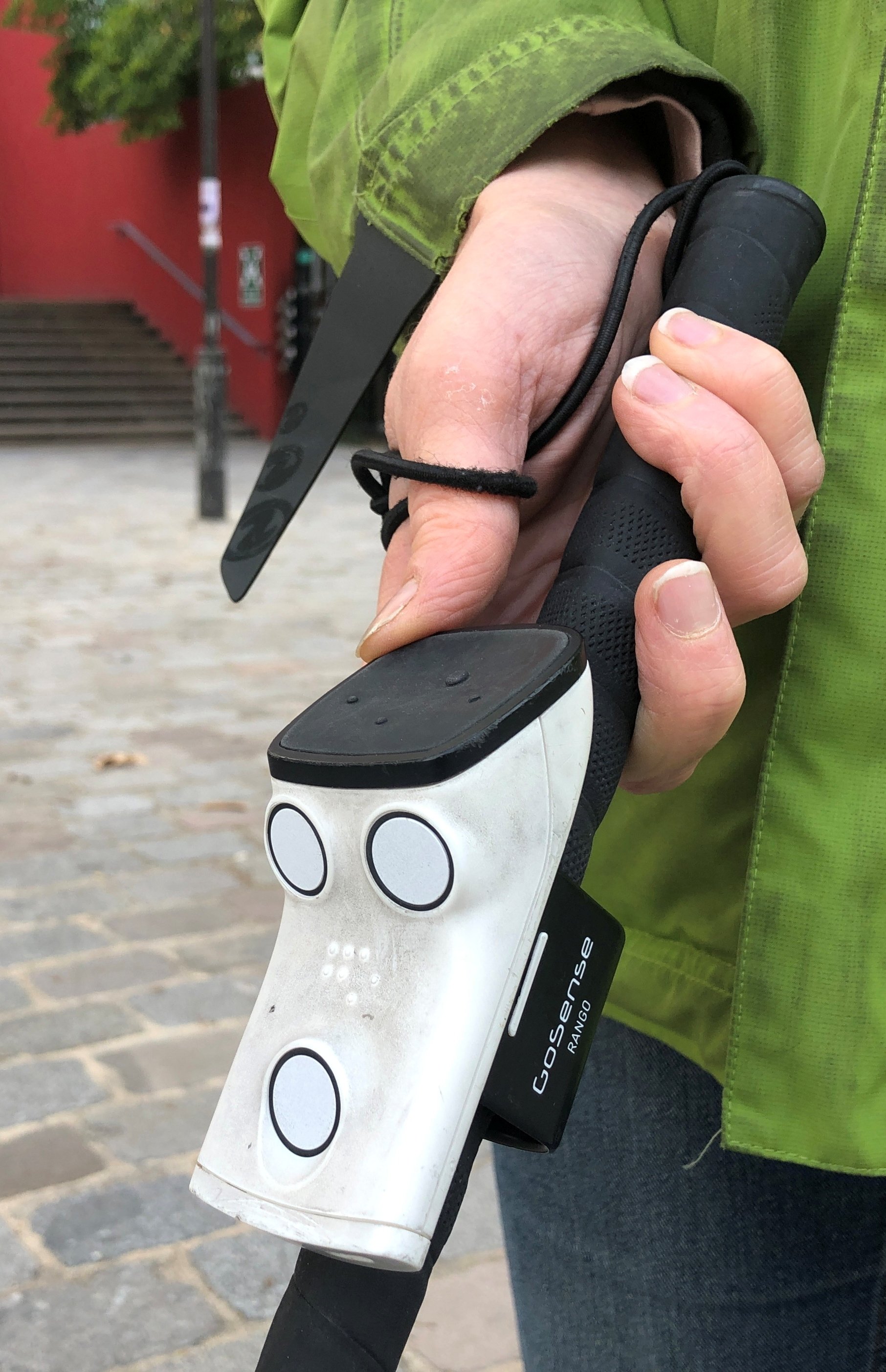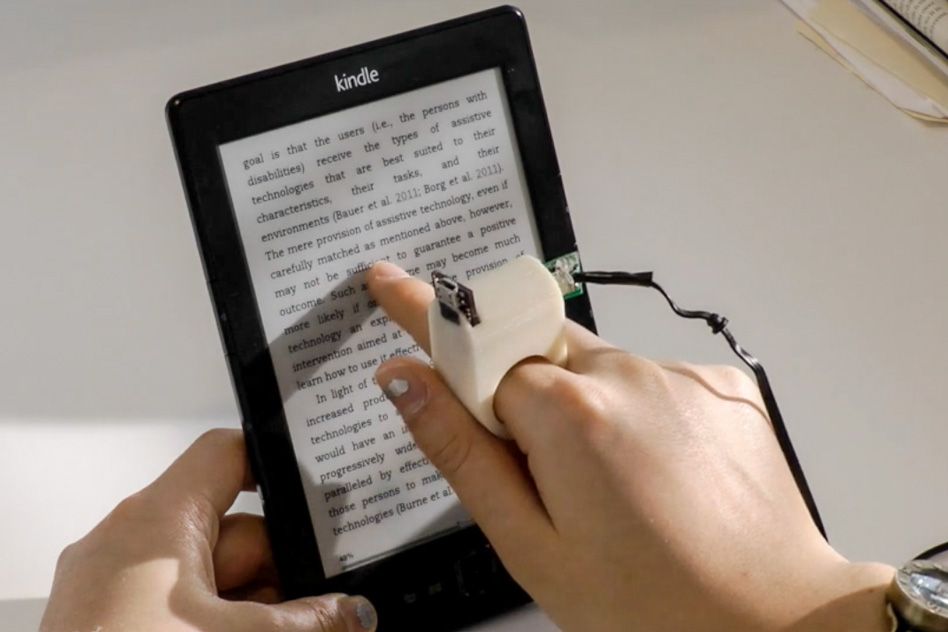Mobility Aids for Visually Impaired Users: Improving Freedom
Mobility Aids for Visually Impaired Users: Improving Freedom
Blog Article
Discover Cutting-edge Tools Designed for the Aesthetically Impaired
The development of innovative tools for the visually damaged represents a substantial innovation in access and self-reliance. Technologies such as clever glasses with AI abilities and mobile applications developed to give auditory summaries are improving day-to-day experiences for users.
Smart Glasses for Navigation

Smart glasses designed for navigating are revolutionizing the means visually damaged individuals connect with their atmosphere. These advanced tools utilize a mix of video camera modern technology, man-made intelligence, and auditory comments to give real-time info regarding surroundings. By employing barrier detection systems, clever glasses can notify individuals to possible threats, making it possible for more secure flexibility in both familiar and strange settings.
The assimilation of GPS innovation even more boosts navigating capacities, enabling customers to receive auditory instructions as they relocate. This hands-free approach not just cultivates freedom yet likewise encourages aesthetically damaged individuals to browse urban landscapes with raised confidence. Additionally, several clever glasses are outfitted with functions that identify landmarks and road indicators, offering contextual details that enhances the individual experience.
Moreover, the development of these gadgets is continuously advancing, with companies functioning to improve the precision of things acknowledgment and increase the variety of navigational features. As clever glasses come to be extra available and affordable, they hold the possible to significantly transform life for visually impaired users. Eventually, these cutting-edge tools represent an essential step toward inclusivity, offering enhanced movement and a greater sense of autonomy for people navigating the globe around them.

Mobile Application for Daily Living
How can mobile applications improve the day-to-days live of visually impaired people? Mobile apps are transforming the method visually damaged users browse their settings, take care of daily tasks, and accessibility information. These applications give necessary assistance through different performances, promoting self-reliance and improving top quality of life.
Numerous ingenious mobile applications are developed particularly for day-to-day living. Applications like Be My Eyes attach aesthetically damaged customers with sighted volunteers by means of video clip phone calls, permitting them to obtain real-time support with jobs such as reading labels or browsing unknown rooms. Similarly, Seeing AI, created by Microsoft, makes use of expert system to define environments, read text, and identify items, properly transforming a smart device right into an effective device for day-to-day assistance.
Furthermore, navigating apps customized for the aesthetically impaired, such as Aira and BlindSquare, provide audio-based directions and ecological information, making it possible for customers to traverse their environments safely and confidently. Beyond navigation and prompt assistance, mobile applications additionally sustain organization and task management, with functions that aid individuals establish pointers, produce order of business, and track visits. In summary, mobile applications serve as indispensable sources, empowering aesthetically damaged people to lead even more independent and fulfilling lives.
Wearable Technologies for Help
Empowerment via modern technology is increasingly apparent in the world of wearable tools designed to aid visually impaired people. These innovative devices integrate seamlessly right into every day life, improving navigation and supplying essential responses to users. As an example, wise glasses geared up with video cameras can acknowledge faces and check out text aloud, allowing individuals to interact even more with confidence in social and expert setups.
One more noteworthy advancement is making use of haptic feedback systems in wearable tools. These designer glasses systems make use of vibrations or various other responsive signals to share information regarding the user's environment, such as barriers or modifications in terrain, boosting mobility and security. Wearable innovations likewise consist of wristbands that attach to smart devices, notifying individuals to alerts with refined resonances, hence improving connection without dependence on visual signs.
As these innovations proceed to progress, they are not just boosting independence for aesthetically damaged individuals but also promoting a greater feeling of incorporation in culture. By linking the gap between challenges encountered in everyday living and the capacity for autonomy, wearable technologies offer as essential devices in the pursuit for equal rights and empowerment for those with aesthetic problems.
Audio Description Devices
Sound summary tools play an important function in enhancing availability for aesthetically damaged individuals, offering them with the ability to involve with aesthetic media. Smart glasses for the visually impaired. These tools supply narrated summaries of vital visual components in films, television programs, and live performances, making certain that customers can fully comprehend the context and feelings communicated via visuals
Sound summary can be incorporated right into different platforms, consisting of streaming solutions, cinema screenings, and live movie theater. Lots of preferred streaming services now include audio summary as an accessibility feature, allowing customers to pick it quickly. Along with mainstream media, specialized apps additionally exist, giving audio summaries for art events, museums, and other cultural events.
The performance of audio description rests on the ability of the narrators, who must convey aesthetic information succinctly without diminishing the original sound. Innovations in this area are also paving the way for more personalized experiences, where users can change the degree of detail and pacing according to their preferences.
Braille Innovations and Gadgets
Braille developments and tools have actually substantially transformed the method aesthetically impaired people engage with text and information. Modern innovations have led to the growth of flexible devices that boost literacy and freedom amongst individuals.
Furthermore, portable Braille notetakers integrate conventional Braille input with contemporary functionalities, promoting note-taking, scheduling, and document modifying on the move. Voice-activated assistive devices. These compact tools typically include text-to-speech capabilities, bridging the gap sports glasses in between Braille and acoustic Recommended Site info
In addition, cutting-edge Braille printers have emerged, permitting individuals to generate Braille labels, records, and educational products effectively. This availability fosters greater engagement in educational and expert atmospheres, ultimately advertising inclusivity.
Additionally, study into smart Braille modern technologies remains to expand. Tools that integrate expert system are being checked out to offer real-time navigating assistance and contextual info, boosting the user experience in diverse settings. In general, these advancements mirror a dedication to encouraging aesthetically impaired individuals with innovation, ensuring they can conveniently gain access to and involve with the globe around them.

Conclusion
The advancement of cutting-edge devices for the visually impaired substantially improves self-reliance and lifestyle. Smart glasses, mobile applications, wearable innovations, audio description devices, and Braille advancements collectively equip individuals by offering essential navigation support, environmental awareness, and boosted analysis experiences. These modern technologies not just foster better incorporation yet likewise promote autonomy in daily activities, inevitably adding to a much more accessible and fair society for visually damaged individuals. Continued advancement in this field holds guarantee for additional enhancements.
As smart glasses come to be more economical and easily accessible, they hold the potential to significantly transform daily life for aesthetically damaged users. Mobile applications are changing the method aesthetically damaged customers navigate their atmospheres, take care of everyday tasks, and accessibility details. Applications like Be My Eyes link aesthetically damaged individuals with sighted volunteers using video phone calls, permitting them to receive real-time support with tasks such as reviewing tags or browsing unknown rooms.In addition, navigation apps tailored for the visually impaired, such as Aira and BlindSquare, offer audio-based instructions and ecological info, allowing customers to traverse their environments securely and with confidence.The development of cutting-edge devices for the aesthetically damaged considerably boosts freedom and top quality of life.
Report this page